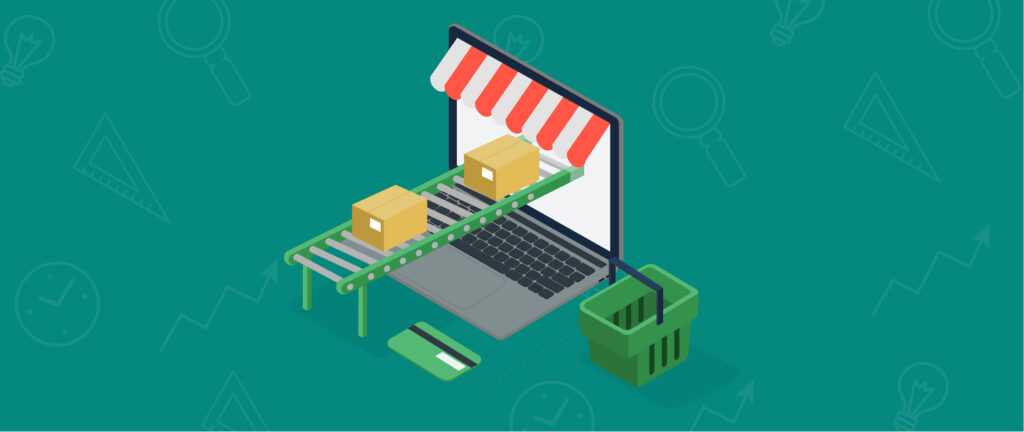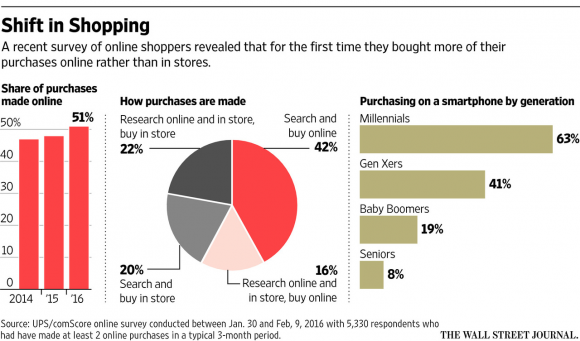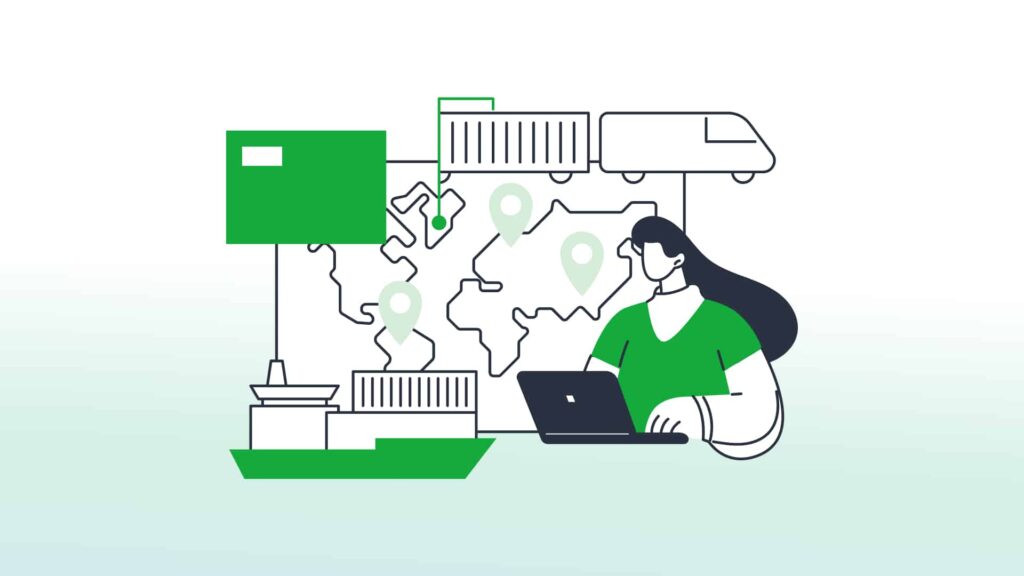If you’re considering shutting the doors to your shop and transitioning your business online, you’re not alone. In an increasingly digital age, more and more major brick-and-mortar retailers are moving online. Even major – and profitable – retailers are shutting their doors to focus on digital efforts.
Last August, Macy’s, Inc. announced it will be closing another 100 of its nearly 700 full-line Macy’s stores. Closing almost 15% of their remaining full-line locations will be no small task, and nearly all of the soon-to-be-closed locations are reported to be cashflow positive. However, Macy’s, Inc. President Jeff Gennette notes that the company “decided to close a larger number of stores proactively so we can invest in a winning customer experience in our most productive and highest-potential locations, as well as invest in growth sooner and more aggressively in digital and mobile”.
According to an annual survey by comScore and UPS, shoppers are making a record-high 51% of their purchases online. Combine the rising influence of social media with increased use of smartphones, and it’s fair to say that this trend will continue its rapid growth.
Moving your business online can expand your reach to a global audience – while saving money on overhead costs. If your company is heading for a mostly-online or online-only presence, read on to learn how you can leverage your in-store presence to build your eCommerce channels and drive traffic to your website.
Tips to Effectively Transition from Brick-and-Mortar to eCommerce
Build Your Email List
Don’t wait to build your online audience. Leverage your shop’s existing foot traffic to build your email list. For an easy strategy to implement today, create an in-store campaign to gather newsletter opt-ins at the point of sale or while shoppers browse. Encourage sign-ups by offering a coupon to be emailed to them for use on their next purchase, or enroll them into a raffle for a chance to win a store gift card.
Similarly, promoting your social media channels will allow you to market to existing customers on individual social platforms such as Facebook and Instagram. However, your email list should be top priority as it will be a far more important resource than a collection of likes on your brand’s Facebook page. A solid email marketing strategy will allow you to put yourself in your customer’s inbox regularly, reaching customers directly and keeping your brand top of mind.
Note: You can also use your email list to solicit reviews from new and existing customers. This feedback can be featured on your website as testimonials to increase social trust in potential online customers.
Design Your Website with Users in Mind
When customers walk into your shop, they get the feel of your brand and can easily browse your selection of products to find what they need. The same should be true of your online store. Your website should reflect your brand while providing a streamlined shopping experience. Just as you wouldn’t want a cluttered store, make sure your website is well organized and easy for users to navigate.
For an optimized user interface:
- Ensure your website’s search bar is clearly displayed at the top of your website, where customers expect to find it.
- Include clearly labeled categories in the main navigation menu of your website.
- Products must be categorized and tagged, so they can be located via the search bar. Products should also be merchandized within individual categories.
- Product imagery should be clear, compelling, and high quality. Consider adding images from multiple angles of a product.
- Product titles and descriptions should be clear and concise, yet informative. You can proactively reduce customer service inquiries by simply including product specifications, features, and answers to frequently asked questions.
- Feature contact information and business hours for customers with questions or concerns. Depending on your customer base’s preferred method of communication, this may include a toll-free phone number, live chat support, an email address, and a built-in contact form.
- Include links to your shipping policy, return policy, and terms of sale. These documents should be written clearly and professionally to instill trust in potential customers.
- If your company offers guarantees such as price matching, warranties, or satisfaction guarantees, make sure that information is prominently displayed in a relevant location.
- Offer a variety of familiar payment options such as PayPal to cater to a customer’s preferences.
Once your website is ready to launch, consider soliciting user feedback. Select a small number of customers to beta test your website and complete a survey, then reward them with a coupon or shopping credit. You’ll receive priceless feedback to better understand how your customers are using your website. Plus, this process may uncover some technical bugs to save you from lost sales upon your official website launch.
Transition Representatives to Online Customer Service
Switching from brick-and-mortar retail to ecommerce doesn’t necessarily mean letting go of your current employees. When you launch your ecommerce storefront, your current shop team and floor reps can be utilized to handle customer service phone calls, live chat, social media, and email inquiries from online shoppers.
Customer service may be even more important for online shoppers than it is for in-store shoppers. The contact methods you offer will be the most direct way online customers interact with your company. It is not necessarily recommended to offer every possible form of contact, but it is vital to offer the right contact methods for your customers.
Announce Your Online Presence
When launching your website, make sure to notify your existing local customer base. Consider simple ways your brick-and-mortar shop can spread the word about your new website. For example, you may display a sign promoting your new website at the shop entrance, or store representatives can include a marketing insert with every purchase. Bootstrapped businesses can enlist the support of team members by having store employees make individual announcements to customers at the point of sale: “We just launched our new website with free shipping on all orders!”
Reward Online Shoppers
Customers like to get great deals, and they love to get free things. Consider offering free shipping to motivate shoppers to choose your online store over a competitor. This popular incentive encourages shoppers to buy online – and your store can be included on deal sites such as FreeShipping.org. Shipping costs can be built into product prices as a way to simplify your customers’ user experience while protecting your bottom line. Alternatively, offering free shipping on orders above a minimum purchase amount can increase your average order value.
If your company intends to maintain a brick-and-mortar presence, you can still utilize this strategy by offering in-store pick-up and easy in-store returns for online orders.
Although the transition from brick-and-mortar to ecommerce can present its share of new challenges, the tips we’ve outlined above will help your company effectively make the switch to the digital realm.
Is your business transitioning to ecommerce, or have you already implemented a successful digital strategy? Email us your questions, tips, and experiences to be featured on our blog!






